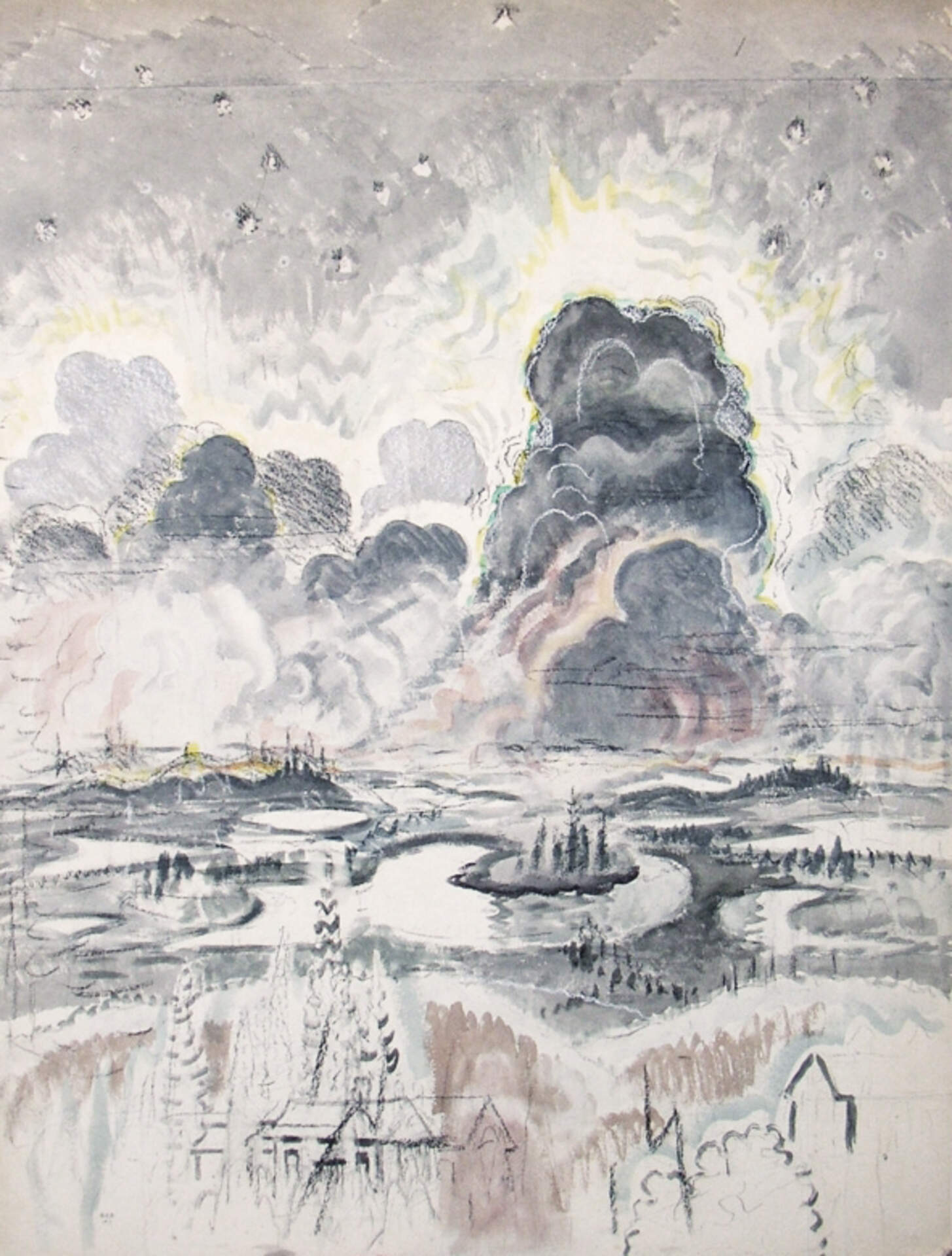Charles E. Burchfield (1893-1967)Heat Lightning (also known as Landscape with Grey Clouds)
1962
watercolor, charcoal, and white chalk on joined paper, unfinished
58 x 45 inches
DC Moore Gallery, New York
In the late summer of 1962, Burchfield began to work in earnest on the painting Heat Lightning. On August 6 he wrote:
Got to work finally on the “Heat Lightning” – The work went fairly well, but as usual unforeseen problems came up at almost every point. On the other hand, some parts which I thought beforehand might be difficult, seemed to solve themselves; such as; the vast land of small lakes reaching out to infinity almost painted itself - A major miscalculation was the main thunderhead which turned out to be not high enough. To raise it to the height it ought to be will crowd the “Big Dipper” and “Cassiopeia’s Chain” too much, as well as the North Star”, so I think I will have to add to the picture at the top –
Like in Orion in Winter, Burchfield found the need to expand the sky in this picture. High up in the sky on the left-hand side is one of the best-known and most easily recognizable star patterns. The Big Dipper, which also constitutes the seven brightest stars in the formal constellation Ursa Major, hangs high above a massive bank of clouds, which carry a distant storm and the heat lightning that gives the picture its name. To the right of the thunderhead, the “W” shape of five stars in Cassiopeia teeters on the edge of a towering thunderhead cloud. The following day, he wrote in his journal:
The “Heat Lightning” picture fills me with joy – It is a new departure for me, and I feel I have made a good beginning. (was it necessary for me to fly seven miles high in a jet, in order to be able to do this picture? I think so) – It is a vast subject.
- From the exhibitionCharles E. Burchfield: Oh My Heavens
